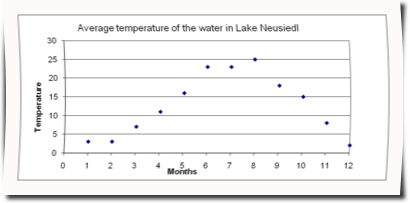
Alexander Klement
Mittwoch, 21. April 2010
|
|
The Landscape:
Open oak forests were originally the dominant feature of the Seewinkel landscape, before inhabitancy by Neolithic peoples. Seewinkel’s landscape today is the result of human intervention over thousands of years:
- extensive clearing of the woodland
- Drainage
- mowing and grazing
After World War II, there were still large herds which were grazing on common pasturage. It’s this form of semi-extensive cattle farming, which has a long tradition: There were lots of domestic animals driven to the nearby pasturage and brought back in the evening. In drier seasons like spring, higher and drier parts of the land were used for grazing; as the water level declines, margins around the pools were also used. This regular use for grazing had a manifold effect on the vegetation- it was stimulating biodiversity and pushing back reed growth from pool shorelines and wet meadows…
Saltwater pools:
A very special feature about Lake Neusiedl is the saltwater pools. Those 45 are situated all over the lake region. In depth they vary between 60 cm depth and total dryness. It’s rainfall in autumn and winter to reborn them, while in summer they dry out totally. Some of them have been lost to human interference, while some of them silted in naturally.
We normally combine saltwater pools with big oceans, so what’s the matter with those tiny inland pools? Together with Hungary and Asia it’s the only place to provide us similar phenomena. Some of them form because of breeches in the embankment and in addition sediments are deposited, which leads to erosion and inland depression- the basis for pool formation. But some of them are even older than the lake; Ice age left its mark by creating basins in which the pools then formed.
The salt concentration level increases as the water level drops.
The salt which we can find most into the lake Neusiedl is sodium carbonate but there are also other types like sodium sulphate…. .
This is the reason why we can find plants which we normally can only see on the sea coast.
When the polls have a brown colour they are called, ”black water’’ pools, the colour comes from the earth on the ground. Not only the salt content, also the different temperatures between day and night make it hard to survive in the pools. Typically inhabitants of the salt pools are the pied avocet and the Kentish plover.
Spögler Maximillian, Tobias Dorfmann
|

Alexander Klement
Mittwoch, 21. April 2010
|
|
Steppe Lake (General)
A steppe lake is a lake that is usually very plain. It has a variable water-level which depends on rainfall and dry periods.
Depth of Water
The lake Neusiedl has a medial depth of one Meter (three feet) and a maximal depth of 1.8 meter (six feet)
History
It was formed between 16.000 – 12.000 BC during an Ice Age. The last big dry period was from 500 BC until 200 AD. 1811 it was completely desiccated. The last time the water level was over 3 meter (10 feet) in places was in 1878. In the last century many canal and dikeconstructions were done.
Temperature

Inlet and Outlet
The most important inflow is rainfall. Other appreciable inlets could be the Wulka, which comes from Austrian direction and the Kroisbach which arrives from Hungary. There are also many submontane fonts.
One outlet is the “Einser Kanal” which was built in 1900. But the biggest outlet is evaporation, because the lake fills up a big area.
Expansion
The lake includes an area of 320 km², where the closest point is about 5 km and the widest about 15 km.
Different nations
The lake is the national border between Austria and Hungary. But the national park includes both sides. So the connection between the nations turns out satisfactory.
Water quality
The water is very muddy, because the wind spins up tiny segments of the ground that decline very slowly.
There could also be mentioned that there is salt in the lake. The saline magnitude is about 1/20 of the sea.
Ecosystem
The transitional zone has a big variety of habitats, and the richness of species is given in a high level.
Economical use
The most important economical use is Tourism. Also the reed can be used as insulation to gain colefactory.
Moritz Prinoth, Villscheider Christian, Klement Alexander
----------------------------------------------------------------------------------------------
Mfg Grüßen Ville, Moore, Kalle
Rechtscheibfehöer sind erwünscht und keines ungewollt... xD
|


















Kategorie:
lake Neusiedl